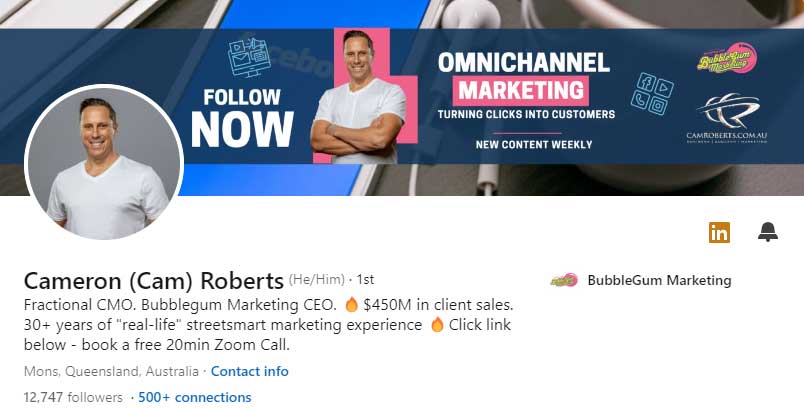Why Single-Channel Marketing Is Dead: Embrace Omnichannel or Get Left Behind
By Cameron Roberts – Founder & CEO of Bubblegum Marketing,
Posted On July 1, 2025
The marketing of the past has come a long way. Initially, it was simple ads on television or in newspapers. Now, companies have numerous options for getting their message across to their target audience. But some still hold on to a single one, and that is the worst decision. Nowadays, consumers expect much more. They want seamless and smooth experiences wherever they go. If you do not transform, your business may find itself on the old side of the street.
The Limitations of Single-Channel Marketing
- The Narrow Focus of Single-Channel Strategies
Relying on just one channel makes marketing narrow and limited. Whether it’s email, social media, or retail stores, sticking to one means fewer chances to connect. Customers don’t just use one method. They hop from online to offline, expecting consistency. If your message only lives on one platform, others miss out. You risk losing potential customers to competitors who are everywhere.
- Diminishing Consumer Engagement
Data shows single-channel campaigns don’t work as well as they used to. Open rates for email drop, and social media posts get fewer reactions. When a message isn’t part of a bigger plan, people tune out. This also affects conversions. Fewer people buy or sign up when they feel disconnected from your brand.
- Competitive Disadvantage
Companies that don’t adapt fall behind, many companies use multiple channels. They create a connected experience across online, mobile, and in-store. This approach keeps them top of mind. If businesses stay stuck in a single channel, there will always be someone trying to get ahead of others. Customers will go to brands that make buying easy and simple.
Omnichannel Marketing Rising: Why Does It Matter?
- Customer Expectations in the Digital Era
People today want personalised experiences. They expect companies to know them across all channels. If a customer reads a product review online and then sees the product physically in-store, they would want that feeling of connection. A brand that can provide this experience is trusted, and the customer is loyal.
- Increased Customer Engagement and Loyalty
Omnichannel marketing creates stronger bonds. Think of Starbucks. Their app links to in-store purchases and rewards. Customers feel appreciated and understood. This kind of connection encourages repeat business and shares positive feedback.
- Higher Conversion Rates and ROI
Businesses that go omnichannel usually see better results. When marketing messages match across platforms, more people buy. It’s not just about more sales — it’s about smarter marketing that works.
Ready to Escape the One-Channel Trap?
Let BubbleGum Marketing build your high-converting omnichannel strategy—designed for the customer journey of today.
From email automation to seamless CRM integration, we’ve helped 7-figure brands scale fast—now it’s your turn.
Implementing an Effective Omnichannel Strategy
- Conducting a Customer Journey Mapping
Start by tracking your customers’ paths. Find out where they shop, browse, or ask for help. Use tools like customer journey maps to see all touchpoints. This helps you understand what works and what needs improvement.
- Integrating Data and Technology
Your business needs tech that shares data easily. Customer Relationship Management (CRM) systems and analytics tools pull all information into one place. This way, your team sees a complete picture of every customer and can act on it.
- Personalisation in Scale
Use data collected and shared among channels before sending messages. For instance, the products used by customers can be presented through targeted ads. Or use personalised emails according to previous purchases. Such approaches will feel less marketing and more like people talking to friends.
- Training and Aligning Internal Teams
All departments should speak the same language. Marketing, sales, and customer service need to work together. Consistent messaging across teams builds trust. When everyone’s aligned, customers receive a smoother experience.
Challenges and How to Tackle Them
- Data Silo and Fragmentary Nature
The resolution of departmental conflicts in data exchange is somewhat difficult to fathom. Invest in connecting tools. The regular meeting of teams achieves a consensual understanding. Aim at having a ‘single source of truth’ regarding customer information.
- Budget and Resource Allocation
Resourcefulness is a prerequisite to any omnichannel transition. Initiate from something small, concentrating on channels with the most impact, then reap results to justify the expansion of technology and team resources. Make sure you hire the right people.
- Measuring the Success Very Well
Ensure that you monitor the right metrics. Analyse the level of engagement from the customers, the repeat purchases, and the average order values. Utilise the analytics tools to see what channels perform the best. This will help set the future strategy and budgets.
Conclusion
With just a single-channel marketing strategy, it is simply not enough anymore. Customers want to experience a connected and personalised brand at every point of interaction. Companies choosing to disregard this will very fast see their backsides. Omnichannel strategies embrace and inculcate strong customer relationships, generate sales, and remain in existence.
So start auditing your present channel, put some money into data tools, and create a well-recognised content plan for customers. All brands that offer a smooth and highly consistent experience across all touchpoints will be running the game in the very near future. They say, “Don’t wait; adapt, or you will be left behind very fast.
FAQ’s
WANT TO BE OUR NEXT SUCCESS STORY?
Book a Free Consult
Schedule a 15-minute Free Consultation via Zoom meetings with our Director, Cam Roberts by clicking the button below now:
Recent Articles
- Why Your Email Click Rates Look Low in 2025
- How Our eCommerce Marketing Agency Drove 121% Growth
- What Is Google BARD? A Guide to Google’s New AI
- Facebook Ads Budgeting & Strategies for 2025
- Top Marketing Strategies from Fortune 500 Companies
- Weird & Wonderful: Things Google Probably Doesn’t Want You to Know
- Top 7 Mistakes Businesses Make Without a Facebook Ads Specialist
- Why Automated Sales Funnels Are a Game-Changer for Small Businesses
- How to Choose the Right Facebook Ads Agency in 2025
- Social Media Advertising Trends 2025 for Business Growth
Request A Quote
Request A Quote for your next Website or Funnel Project below:










































